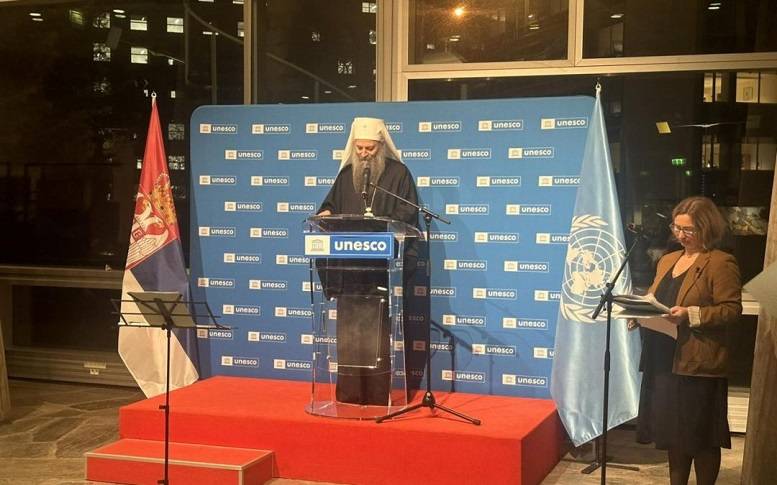
Patriarch Porphyrije opens exhibition on Serbian holy sites in Kosovo and Metohija at UNESCO headquarters
On the occasion of the twentieth anniversary of the inclusion of the Visoki Dečani Monastery on the World Heritage List, the Ministry of Culture of the Republic of Serbia, in cooperation with the Diocese of Raška-Prizren, organized an exhibition at UNESCO headquarters in Paris on the exceptional universal values of Serbian holy sites in Kosovo and Metohija, the preservation of which is also UNESCO's mission.
At the beginning of the opening ceremony in the Segur Hall, Mr. Lazare Elondo Asomoa, Director of the UNESCO World Heritage Centre, and Mr. Arnaud Guillon, Director of the Office for Public and Cultural Diplomacy of the Government of the Republic of Serbia, addressed those present today.
Mr. Nikola Selaković, Minister of Culture of the Republic of Serbia, spoke about the numerous activities by which the Ministry of Culture of the Republic of Serbia highlights the importance of Serbian holy sites and cultural monuments in Kosovo and Metohija, inscribed on the World Heritage List and the List of World Heritage in Danger, as well as the fight for their preservation for future generations.
The exhibition was opened with an inspired speech by His Holiness the Serbian Patriarch, Mr. Porfirije:
- Your Eminences and Most Reverend Brother Hierarchs, Honorable Minister Selaković, Honorable Director Elondo Asomo, Honorable Mr. Guillon, Your Excellencies, Venerable Fathers, Ladies and Gentlemen, Dear Brothers and Sisters.
A lamp is not lit and
put under a bushel, but on a candlestick,
and it gives light to all who are in the house. (Mt 5:15)
Where is it more appropriate to remember these words of the Savior than here in Paris, the City of Light, and on the occasion of the 20th anniversary of the inclusion of a certainly extraordinarily valuable cultural and religious beacon, the Visoki Dečani Monastery, in the UNESCO World Heritage List. The light with which this city shines, as a jewel of the history and culture of the entire European continent, is, in all likelihood, the same quiet light with which the Decani lamp burns and with which Visoki Dečani shines both to Orthodox Serbs and to the entire civilized world. That light is a reflection of the One who is the true Light that illuminates every person and the entire world, our Lord Jesus Christ, and an expression of the faith of our ancestors in Him, that is, in what is truly good, sublime and beautiful. That is why numerous churches and monasteries in Serbia and France, but also in the entire world, are not only spiritual beacons, but also masterpieces of architecture and art of all humanity.
Due to the difficult and complex historical circumstances that the Serbian people have gone through over the centuries, and which, unfortunately, they are still going through today, the Visoki Dečani have constantly, silently and with dignity fulfilled their primary light-bearing mission, testifying even in the darkest times that light is the only correct path and the only true goal of every person. Thus, even when the darkness of evil, sin, hatred and violence was thickest and when it seemed that its triumph was coming, they illuminated the path to goodness, virtue, peace and love with their light.
Through their existence and activities, the Decani Monastery, like every other Christian sanctuary, has always testified to holiness and pointed to it as the highest ideal and imperative of the Gospel expressed in the words of the Lord: Be holy, for I am holy! (Lev. 19:2). In this way, they also pointed to the fact that holiness is the basic purpose of man, that is, that every man was created to become holy. That is why monasteries are places of true transformation, because primarily through asceticism, fasting, prayer, love of God, brotherly love and other virtues, they reborn people. Both the founders of monasteries and their inhabitants are people who belong to a specific people, but being enlightened and sanctified by the grace of God, they transcend the boundaries of the people from which they originated and, identifying with Christ, become universal people and through love belong to everyone. Isn't the best illustration of what I'm talking about the river of Orthodox, but also other people of different faiths and nationalities, who approached and approach the Holy King Stefan of Decani, praying and receiving God's help through him. The same applies to monasteries as holy places, as sanctuaries. It also applies to the people of Decani. They also transcend the borders of the people and the Church to which they belong. They also have universal significance, they belong to the whole world, which does not deny their primary affiliation with the Serbian people and the Serbian Orthodox Church that gave birth to them, thus giving space to individual groups or peoples to falsify historical facts and appropriate someone else's spiritual and national heritage. Especially when you consider that it was precisely such an aggressive initiative that led to UNESCO having to put itself in the protection of Decani and the preservation of the sanctuaries whose survival, in such an environment, is questionable, exposed to possible threat and, God forbid, to destruction.
Exactly twenty years ago, the Visoki Dečani Monastery was inscribed on the UNESCO World Heritage List, and that is the reason for our gathering tonight. Two years later (2006), three more Serbian holy sites from the area of Kosovo and Metohija (the Patriarchate of Peć, Gračanica and the Virgin Mary of Ljeviška) were also inscribed on the List of World Heritage in Danger. By placing Visoki Dečani and the other three mentioned Serbian holy sites under its protection, UNESCO demonstrated their universal significance for the entire civilized world, while at the same time preserving them for future generations, for all those who seek peace, strive for goodness and love light. Therefore, both as a people and as a Church, we are immensely grateful to UNESCO, which, through its activities, has made the words of the Gospel, “Let the light shine in darkness, and the darkness shall not overcome it,” (John 1:5), appear true for the umpteenth time. May that quiet and inexhaustible light with which Visoki Dečani shines to the whole world fill all of us gathered here, all the people of the Dečani area and the whole world, and may it always guide us through life. I hereby declare tonight's exhibition open.
***
At the end of the opening ceremony, the choir of the Seminary of Saints Cyril and Methodius from Prizren performed a half-hour concert. The opening ceremony of the exhibition was attended by: His Eminence Metropolitan of Raska and Prizren, Mr. Teodosije; His Eminence Bishop of Paris and Western Europe, Mr. Justin; Archdeacon Radomir Vrućinić, rector of the Seminary of Saint Sava; Archdeacon Dragan Radić, professor at the Orthodox Faculty of Theology in Belgrade.
The monasteries of Visoki Dečani, the Patriarchate of Peć, Gračanica and the Church of the Virgin of Ljeviška in Prizren are outstanding achievements of Serbian medieval art and Christian holy places of the highest rank, of particular importance for Serbian ecclesiastical and national history, but also, most importantly, for the life of the Serbian Orthodox Church. These holy places are first-class cultural monuments, chosen to represent the achievements of Serbian artistic creativity in the area of Kosovo and Metohija in the Middle Ages. Their histories are intertwined and closely connected thanks to their founders, and to a large extent also to the painters and builders who demonstrated their distinctive artistic style and sometimes left their signatures on these monuments. All four monuments were commissioned by Serbian secular and ecclesiastical leaders.
The Serbian cultural heritage in Kosovo and Metohija is still the most endangered cultural asset in all of Europe. Despite the fact that the heritage includes four magnificent properties that are part of the UNESCO World Heritage and have exceptional universal value, continuous attacks on Serbian heritage in Kosovo and Metohija, attempts to rename and falsify history have become everyday life. Attacks on believers and objects of the Serbian Orthodox Church in Kosovo and Metohija are continuous and complicate everyday life, as well as activities related to the protection of the movable and immovable cultural heritage of the Republic of Serbia. In 2023 and 2024 alone, 31 attacks occurred, most of which were aimed at the destruction and desecration of religious and cultural properties.
***
UNESCO (United Nations Educational, Scientific and Cultural Organization) is an organization of the United Nations whose main goal is to establish and maintain peace in the world through international cooperation in science, culture and education. It was founded on 16 November 1945 in Paris. Today, the organization has 193 member states and 11 associate members that are involved in the work of this organization through five main programs: education, natural sciences, social sciences, culture, and communication and information. The World Heritage Program is one of the most recognizable UNESCO programs. It was established by the Convention Concerning the Protection of the World Cultural and Natural Heritage on 16 November 1972. To date, it has been ratified by 193 countries in the world. World Heritage is actually a list of sites nominated by the UNESCO World Heritage Committee with the aim of preserving these sites of cultural or natural importance. Today, the list includes 1,172 sites, of which 869 are of cultural importance, 213 are of natural importance, and 39 are areas that represent both cultural and natural heritage. Serbia has been a member of UNESCO since 2000, and this list includes five sites of cultural significance in our country. These are: Gamzigrad, Studenica Monastery, Stari Ras and Sopoćani, Serbian medieval monasteries in Kosovo and Metohija and tombstones, stećci. As many as 12 sites are waiting for the list of natural assets.
Source: Serbian Orthodox Church
PHOTOS
RELATED ARTICLES
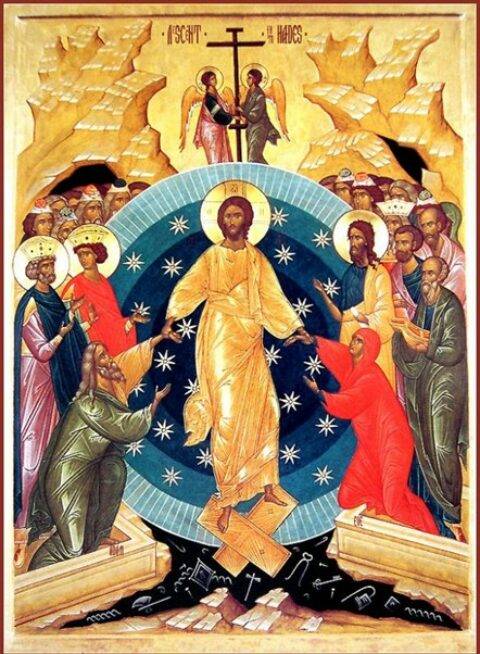
Calendar for April 21 Easter Monday
Early on Sunday, before dawn, Mary Magdalene, Mary the mother of James, Salome...
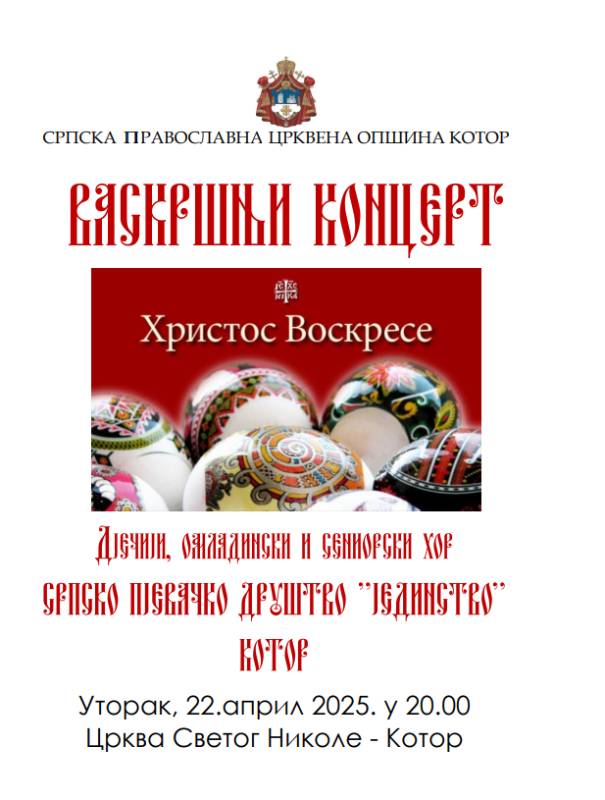
EASTER CONCERT OF THE SPD JEDINSTVO CHOIR
The Easter concert of the children's, youth and senior choirs of the...
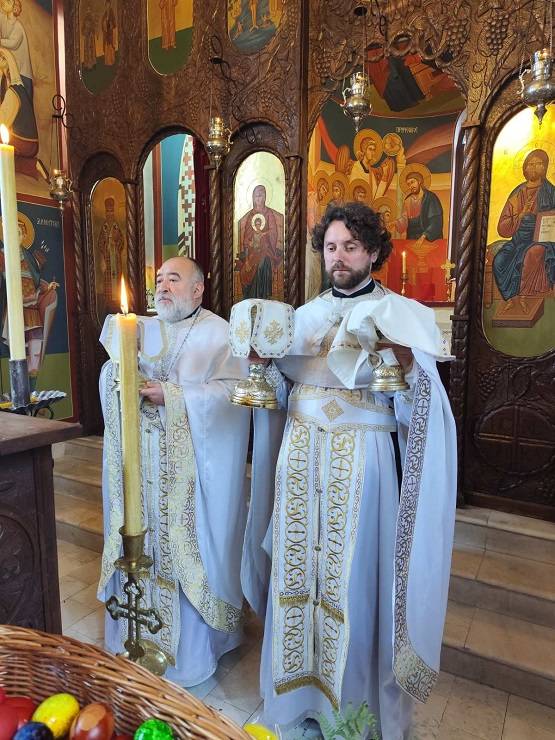
EASTER CELEBRATED LITURGICALLY IN THE CHURCH OF ST. VASILIJE OSTROŠKI IN DOBROTA
The Resurrection of Christ was celebrated liturgically today in the Church of...


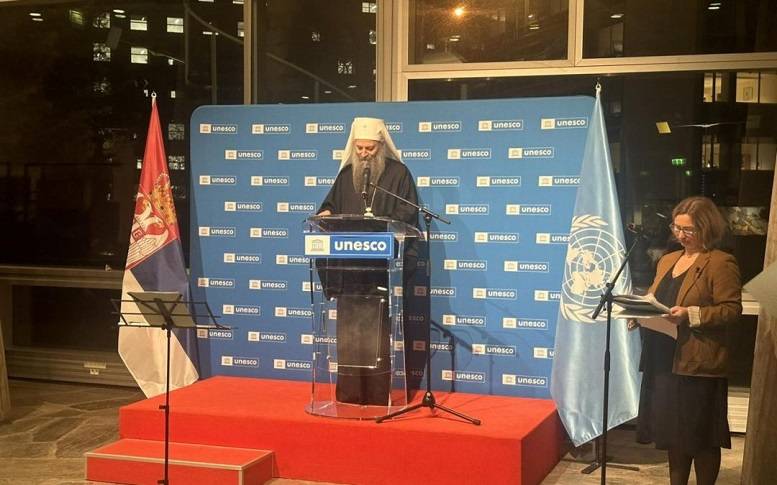

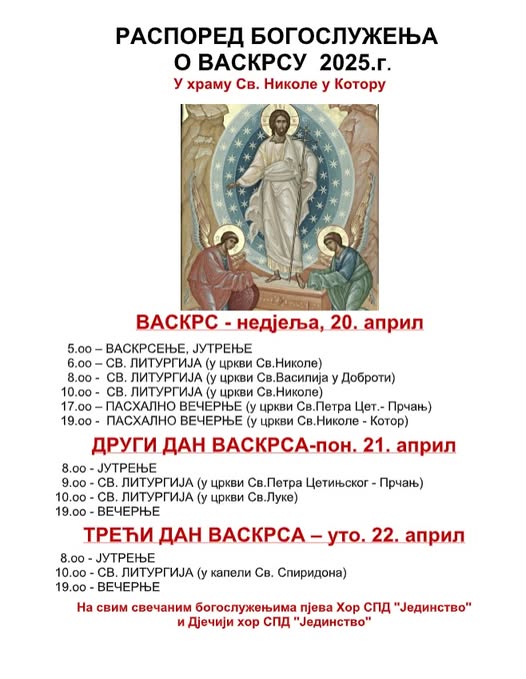
.png)